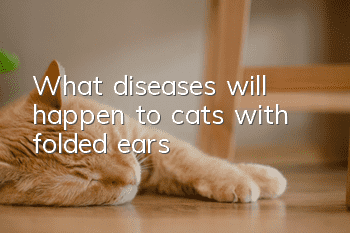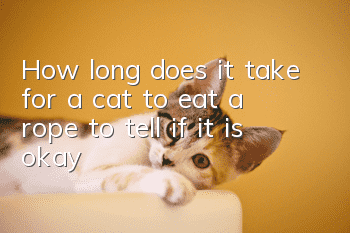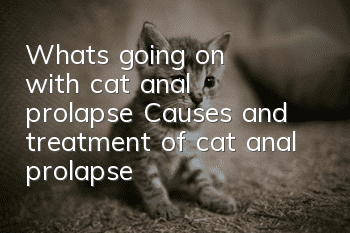What diseases will happen to cats with folded ears?

Diseases that cats with folded ears are prone to:
1. Cartilage disease: cats with folded ears have serious congenital cartilage defects. Once sick, cats with folded ears will suffer from joint pain. , and can even cause paralysis in cats. There is no cure for rickets. The cat's immunity can only be enhanced through scientific feeding and nutritional supplements, such as feeding some chondroitin and joint-strengthening nutrients, and feeding under the guidance of a veterinarian to help resolve the symptoms of pain.
2. Respiratory system diseases: Fold-eared cats will develop bone lesions, which will not only affect their hands and feet, but also affect other parts. One of them is the narrowing of the respiratory tract, causing breathing difficulties. However, cats with severe cases may need surgery to widen their breathing tubes. Seek medical attention promptly once discovered.
3. Heart disease: Fold-eared cats also have a high probability of suffering from heart disease due to genetic problems. Generally, this condition is difficult to detect. By the time the disease is discovered, the cat may Diet control and lifelong medication are required. If the cat has symptoms of dyspnea, do not actively diagnose it first, and let the cat stay in the oxygen therapy cage until the breathing is stable and the blood color is good before taking a chest X-ray.
4. Weak physiques are prone to common diseases. Due to genetic mutations, cats with folded ears have a weaker constitution than normal cats and are more susceptible to feline distemper, skin diseases, allergies, etc. Usually, you should pay more attention to supplementing nutrition for folded-eared cats and have regular physical examinations.
Symptoms of cats with folded ears
1. The tail is stiff and cannot bend or swing like a normal cat.
2. The joints are swollen, have hyperplasia or lumps, or are obviously different in length and have abnormal bending angles, causing unbearable pain.
3. Abnormal nail growth.
4. The soles of the feet are thick and the pillow meat cannot touch the ground.
5. The bones and joints of the hind limbs are deformed, and the cat changes its center of gravity to reduce pain by sitting down, lifting its feet, etc.
6. The speed of joint aging is much faster than that of normal cats.
- What are some ways to choose cat food for Persian cats?
- Can pet cats be brought on the high-speed train?
- What happens if a cat is deficient in vitamins?
- How does the wound of a male cat heal after being neutered?
- What are the breed types of bobtail cats?
- Can cats drink yogurt? What impact does it have on cats?
- Introduction to the book "100 Meow Secrets Cat Owners Must Know"
- Kitten has black spots on his nose
- At what age can a cat be neutered?
- How to feed a one and a half month old cat



